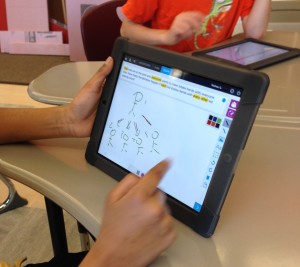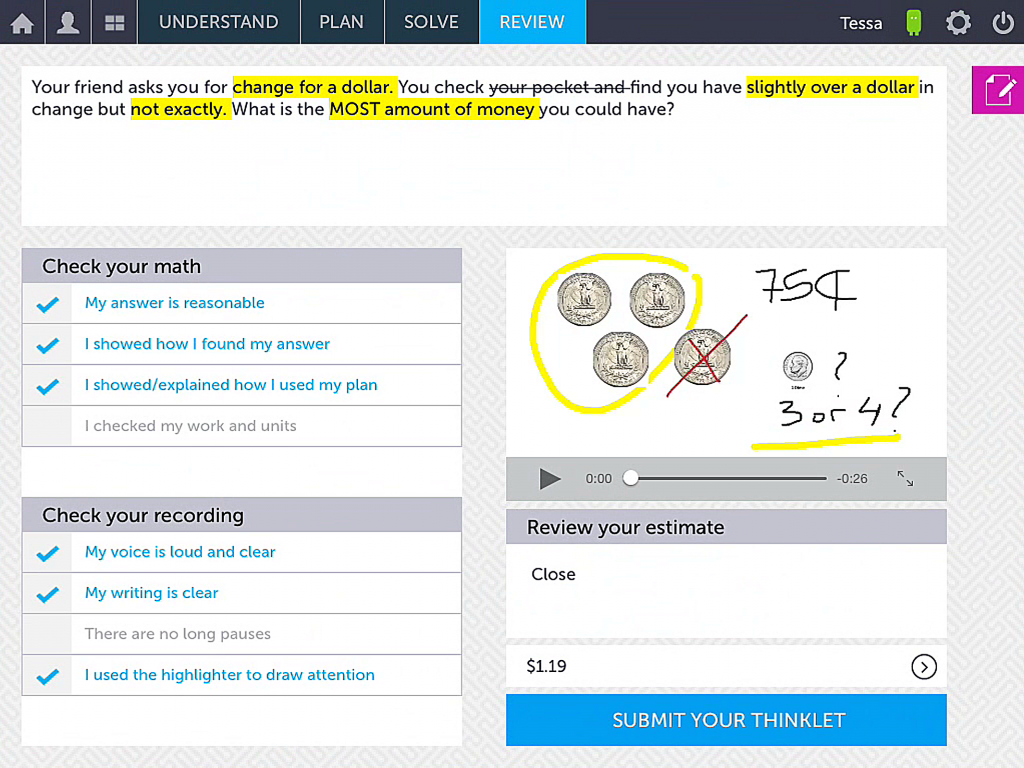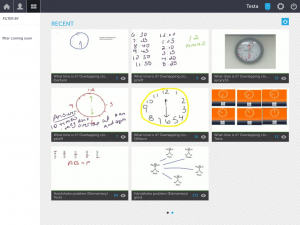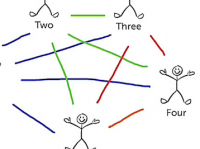This is a guest post from Norma Gordon (@normabgordon) at CueThink – one of our vendors for the November 13-14 iPad Summit in Boston.
 In 1960, George Polya, addressing inservice and preservice teachers, concluded with, “I have given you my ideas about how you should teach mathematics. There are the ideas of active learning, the priority of action and perception, and teaching by the activity of the kids to start them by letting them guess.”
In 1960, George Polya, addressing inservice and preservice teachers, concluded with, “I have given you my ideas about how you should teach mathematics. There are the ideas of active learning, the priority of action and perception, and teaching by the activity of the kids to start them by letting them guess.”
Fast forward to today: Teachers want to engage students in the Common Core Standards for Mathematical Practice, including sense-making, perseverance and constructing arguments and critiquing. Recommendations for how to implement this important shift is outlined in NCTM’s Principles to Actions. The report says that for effective mathematics teaching, learners should:
- Engage with challenging tasks that involve active meaning making and support meaningful learning;
- Connect new learning with prior knowledge and informal reasoning and, in the process, address preconceptions and misconceptions;
- Acquire conceptual knowledge as well as procedural knowledge, so that they can meaningfully organize their knowledge, acquire new knowledge, and transfer and apply knowledge to new situations;
- Construct knowledge socially, through discourse, activity, and interaction related to meaningful problems;
- Receive descriptive and timely feedback so that they can reflect on and revise their work, thinking, and understandings
- Develop metacognitive awareness of themselves as learners, thinkers, and problem solvers, and learn to monitor their learning and performance.
How can we accomplish this, appeal to the diversity in our classrooms and foster an environment where students participate equitably? We’d like to share CueThink, an innovative iPad application designed to improve students’ math problem-solving skills.
CueThink scaffolds Polya’s 4-phases of solving and ties in peer annotations for intelligent feedback, thereby fully engaging learners in the Common Core Standard for Mathematical Practice. In UNDERSTAND, students conjecture. For PLAN they consider pathways before solutions. SOLVE lets them show their work via voice and drawings and REVIEW helps them reflect on their solutions and their communication. Together they form a “thinklet” – solution strategies created by students that can be submitted to the teacher, class or an entire CueThink Community. With ANNOTATE, peers give feedback and offer suggestions and kudos.

Every step of the students’ thought process is valued and discussed, and classmates learn from seeing and annotating peers’ alternative approaches and solutions. The unique approach captures individual and collective thinking while also fostering literacy in math.
Compared to paper and pencil graphic organizers, CueThink supports dynamic, iterative and metacognitive problem solving, where students are not locked into a linear process. With CueThink’s scaffolds in place, the classroom culture can shift – teachers become facilitators, freeing them to focus on the overall problem solving process while allowing students to experience a productive struggle.

Nine key words – higher order thinking
Recently, Steve Leinwand wrote,
“It’s only one of eight Common Core Standards for Mathematical Practice, but we can change schools and change lives if we truly implement Mathematical Practice 3: ‘Construct viable arguments and critique the reasoning of others.’ In many ways, these nine words may be the most important words in the entire Common Core effort. We can’t expect students to construct viable arguments unless we ask them ‘why?’ and ‘how do you know?’ and ‘can you convince us?’”
We couldn’t agree more! CueThink’s approach, resembling Bansho, captures the development of students’ individual and collective thinking. Bansho – literally translated as board writing – is a Japanese teaching method focusing on the mathematical thinking process. Every step is valued and discussed, so classmates can learn from different methods. CueThink student “thinklets” capture their entire thought processes for personal reflection as well as teacher and peer feedback. For more details we recommend reading Communications in the Mathematics Classroom and Bansho as well as Kyle Pearce’s Digital Bansho post, part of his 2013 EdTechTeacher iPad Summit session.
 In the CueThink gallery, students have the opportunity to view and comment on each other’s work. Tapping into students’ gaming world and supporting a diversity of experiences, students will earn badges not only for submitting “thinklets,” but also for providing constructive peer feedback and persevering with revisions or alternate solutions. Teachers can activate students’ higher order thinking – imagine a typical CueThink follow-up assignment as, “Review the class gallery then create an new thinklet using a different strategy you found,” or “Find a thinklet with a similar strategy and one that is different to yours. Compare and contrast then share feedback with the author(s).”
In the CueThink gallery, students have the opportunity to view and comment on each other’s work. Tapping into students’ gaming world and supporting a diversity of experiences, students will earn badges not only for submitting “thinklets,” but also for providing constructive peer feedback and persevering with revisions or alternate solutions. Teachers can activate students’ higher order thinking – imagine a typical CueThink follow-up assignment as, “Review the class gallery then create an new thinklet using a different strategy you found,” or “Find a thinklet with a similar strategy and one that is different to yours. Compare and contrast then share feedback with the author(s).”
#makemathsocial
With problem solving scaffolds in place, students jump in and start thinking, creating right from the get-go. Students are immersed in mathematical, verbal and written conversations, and feedback is exchanged on processes, strategies and those great “ah ha” moments when the answers are the same but paths are different. Most importantly, differences are shared, acknowledged and celebrated. Students are invested in producing more than just an answer and are rewarded for their thinking along the way. Peers support each other proactively and reflectively.
We encourage you to try CueThink and share the changes in student engagement, motivation and problem solving success in your classroom.
To learn more about CueThink and other great apps, we have a great line-up of sponsors and vendors for the November 13-14 iPad Summit in Boston. Early Bird Registration closes soon!


